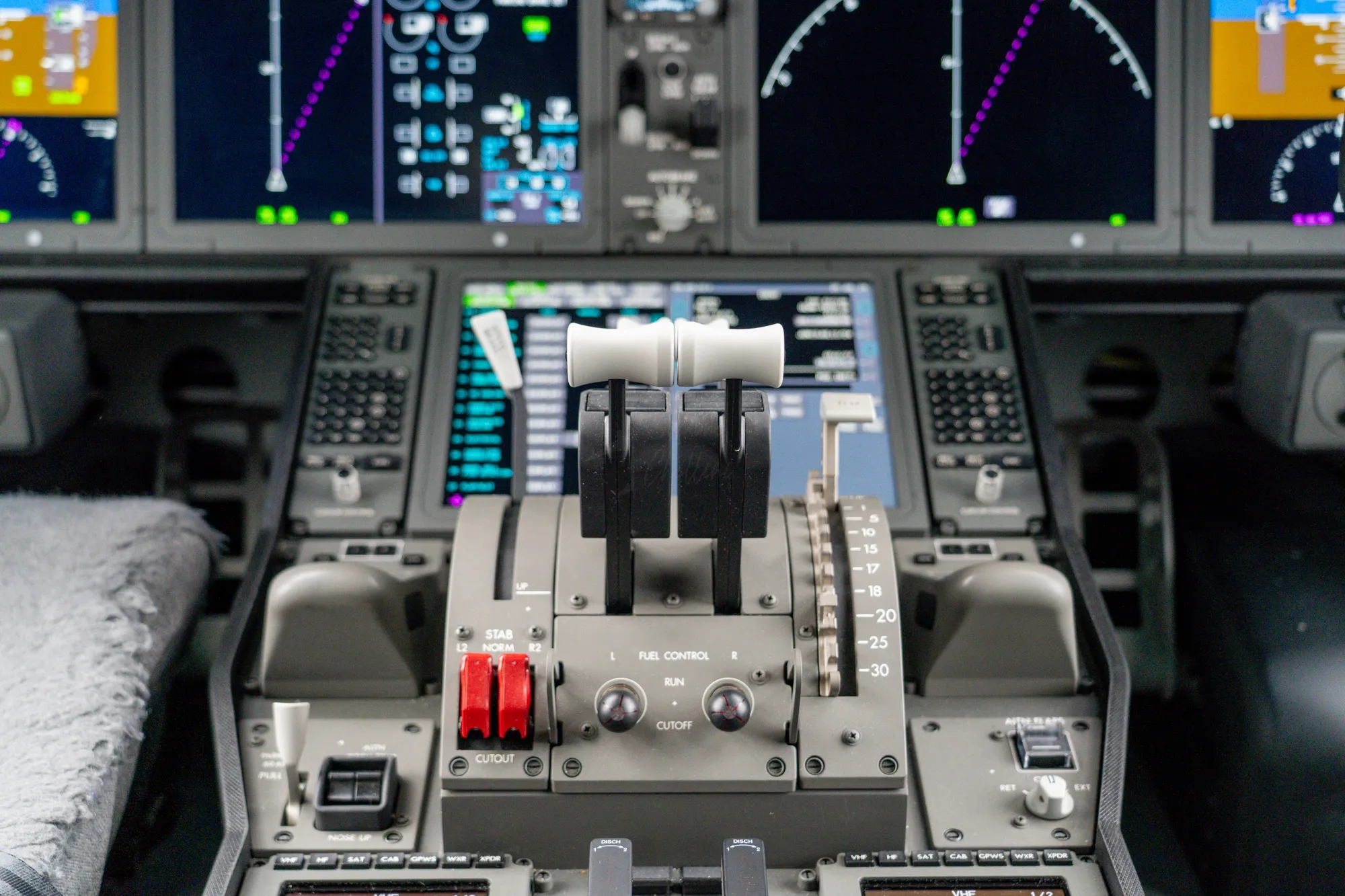DALLAS — The tragic crash of a Boeing 787 Dreamliner near Ahmedabad in June 2025 has triggered intense scrutiny, especially given the unusual and critical flight deck actions that preceded the accident. Among the most striking revelations from the preliminary investigation is the simultaneous cutoff of both engine fuel control switches (FCS) just after takeoff—a scenario that led to a catastrophic loss of thrust at a vulnerable phase of flight.
This op-ed proposes a plausible sequence that aligns with technical systems and human factors involved: one pilot, likely fatigued or microsleeping, may have inadvertently toggled both guarded fuel control switches from RUN to CUTOFF. The other pilot, noticing engine anomalies and perhaps physically observing the act, reacted within seconds to return the switches to RUN. Upon questioning the other pilot, the latter reportedly denied performing the action—indicative of disorientation or memory lapse, often symptomatic of extreme fatigue.
On the 787, the fuel control switches are part of a Full Authority Digital Engine Control (FADEC) system. The switches are electronically latched, guarded, and located prominently on the center pedestal. Moving them requires deliberate physical motion. When set to CUTOFF, both the spar valve and engine fuel shutoff valve close, halting fuel flow to the engine. FADEC then disables ignition and initiates engine shutdown. This is a non-reversible state unless manually corrected.

In this incident, both engines lost power seconds after liftoff. Flight data suggests a simultaneous dual-FCS cutoff, followed by a brief attempt to return to RUN. One engine began a partial restart, but altitude loss was already unrecoverable. No mechanical failure has been reported with the switches or FADEC, and investigators noted no checklist that called for FCS access in that phase of flight.
This raises critical questions: was the crew over-fatigued? Were rest protocols sufficient? Did the pilot suffer a microsleep—a brief and involuntary lapse in attention during which motor actions can occur without cognitive awareness?
Microsleep episodes lasting just 1-3 seconds have been linked to similar incidents in rail and automotive contexts. In aviation, particularly on long-haul duty rotations typical of the Dreamliner’s global routes, circadian disruption and insufficient rest can contribute to such impairments.
Moreover, the denial from the pilot who toggled the switches may reflect a condition known as sleep inertia—when the brain has not fully transitioned from a sleep-like to a wakeful state. It is plausible that one pilot, upon reflexively interacting with the controls during a microsleep episode, had no memory of doing so when confronted moments later.
From a safety perspective, this incident warrants urgent review of:
- Crew rest and duty policies, especially after multi-sector rotations.
- Switchguard designs—should a dual fuel cutoff in flight be physically allowed?
- FADEC logic—can mid-climb FCS toggling be delayed or require confirmation under certain conditions?
- CVR (Cockpit Voice Recorder) and FDR (Flight Data Recorder) analytics for human factors patterns.
This case presents an opportunity not only to understand how even highly automated systems remain vulnerable to human fatigue but also to initiate enhancements in training, ergonomic cockpit design, and sleep science protocols in aviation.
Author: Nafees Kazmi



.webp)
